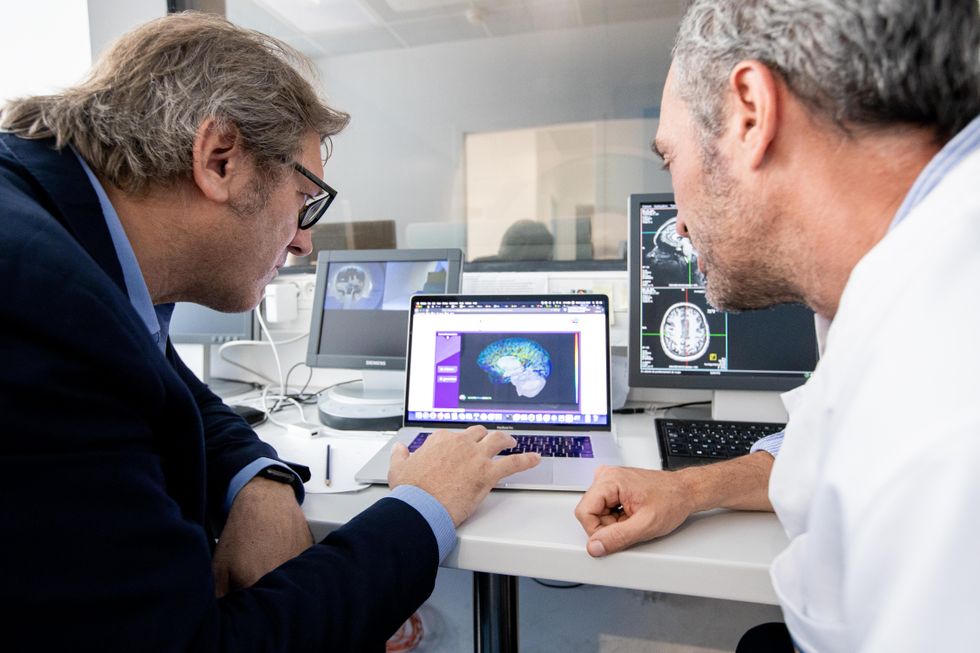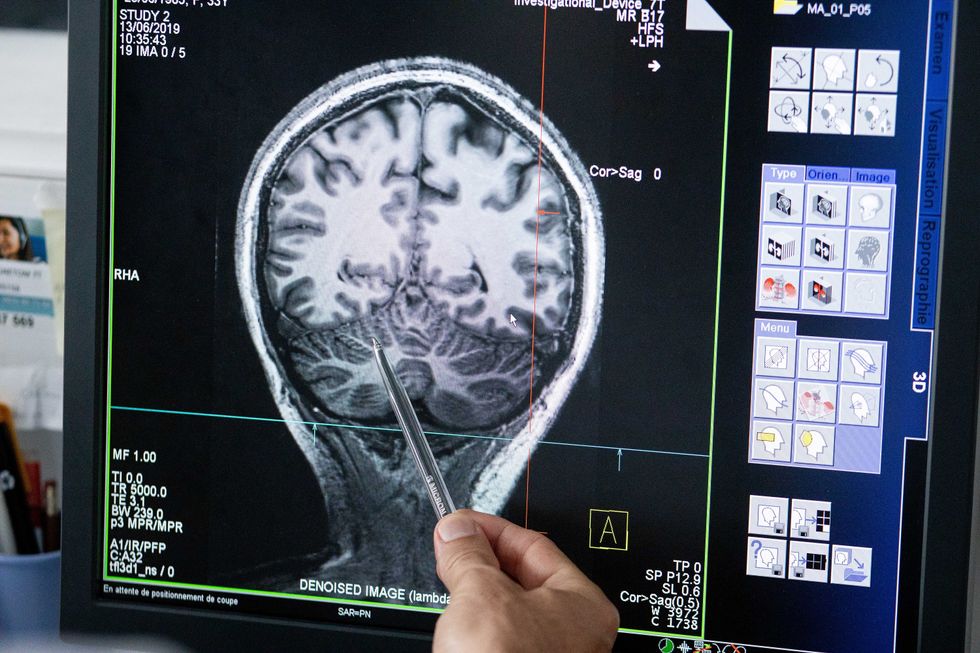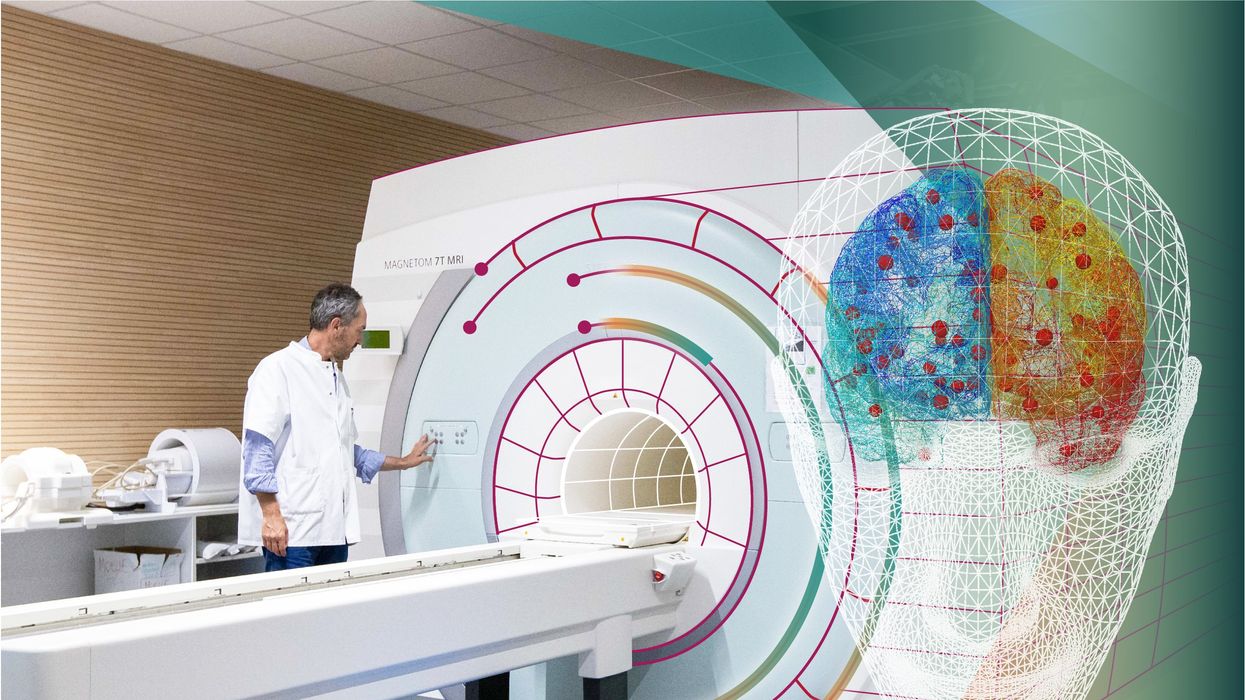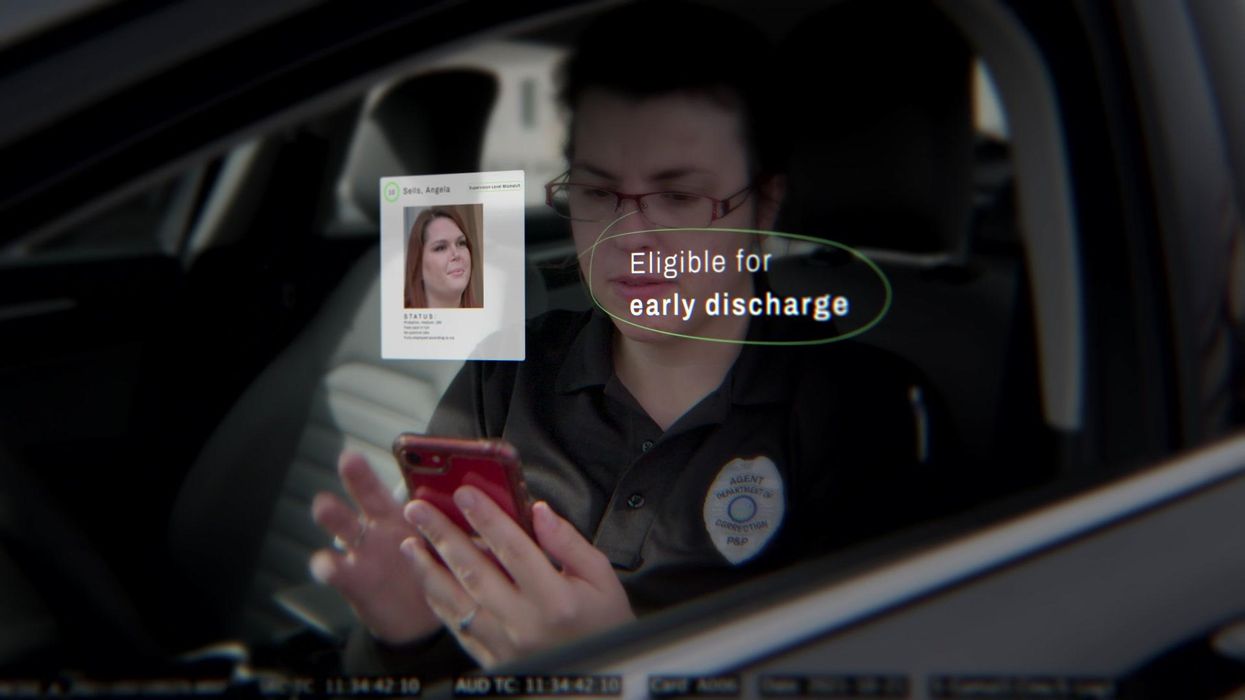In 2013, the Human Brain Project set out to build a realistic computer model of the brain over ten years. Now, experts are reflecting on HBP's achievements with an eye toward the future.
In 2009, neuroscientist Henry Markram gave an ambitious TED talk. “Our mission is to build a detailed, realistic computer model of the human brain,” he said, naming three reasons for this unmatched feat of engineering. One was because understanding the human brain was essential to get along in society. Another was because experimenting on animal brains could only get scientists so far in understanding the human ones. Third, medicines for mental disorders weren’t good enough. “There are two billion people on the planet that are affected by mental disorders, and the drugs that are used today are largely empirical,” Markram said. “I think that we can come up with very concrete solutions on how to treat disorders.”
Markram's arguments were very persuasive. In 2013, the European Commission launched the Human Brain Project, or HBP, as part of its Future and Emerging Technologies program. Viewed as Europe’s chance to try to win the “brain race” between the U.S., China, Japan, and other countries, the project received about a billion euros in funding with the goal to simulate the entire human brain on a supercomputer, or in silico, by 2023.
Now, after 10 years of dedicated neuroscience research, the HBP is coming to an end. As its many critics warned, it did not manage to build an entire human brain in silico. Instead, it achieved a multifaceted array of different goals, some of them unexpected.
Scholars have found that the project did help advance neuroscience more than some detractors initially expected, specifically in the area of brain simulations and virtual models. Using an interdisciplinary approach of combining technology, such as AI and digital simulations, with neuroscience, the HBP worked to gain a deeper understanding of the human brain’s complicated structure and functions, which in some cases led to novel treatments for brain disorders. Lastly, through online platforms, the HBP spearheaded a previously unmatched level of global neuroscience collaborations.
Simulating a human brain stirs up controversy
Right from the start, the project was plagued with controversy and condemnation. One of its prominent critics was Yves Fregnac, a professor in cognitive science at the Polytechnic Institute of Paris and research director at the French National Centre for Scientific Research. Fregnac argued in numerous articles that the HBP was overfunded based on proposals with unrealistic goals. “This new way of over-selling scientific targets, deeply aligned with what modern society expects from mega-sciences in the broad sense (big investment, big return), has been observed on several occasions in different scientific sub-fields,” he wrote in one of his articles, “before invading the field of brain sciences and neuromarketing.”
"A human brain model can simulate an experiment a million times for many different conditions, but the actual human experiment can be performed only once or a few times," said Viktor Jirsa, a professor at Aix-Marseille University.
Responding to such critiques, the HBP worked to restructure the effort in its early days with new leadership, organization, and goals that were more flexible and attainable. “The HBP got a more versatile, pluralistic approach,” said Viktor Jirsa, a professor at Aix-Marseille University and one of the HBP lead scientists. He believes that these changes fixed at least some of HBP’s issues. “The project has been on a very productive and scientifically fruitful course since then.”
After restructuring, the HBP became a European hub on brain research, with hundreds of scientists joining its growing network. The HBP created projects focused on various brain topics, from consciousness to neurodegenerative diseases. HBP scientists worked on complex subjects, such as mapping out the brain, combining neuroscience and robotics, and experimenting with neuromorphic computing, a computational technique inspired by the human brain structure and function—to name just a few.
Simulations advance knowledge and treatment options
In 2013, it seemed that bringing neuroscience into a digital age would be farfetched, but research within the HBP has made this achievable. The virtual maps and simulations various HBP teams create through brain imaging data make it easier for neuroscientists to understand brain developments and functions. The teams publish these models on the HBP’s EBRAINS online platform—one of the first to offer access to such data to neuroscientists worldwide via an open-source online site. “This digital infrastructure is backed by high-performance computers, with large datasets and various computational tools,” said Lucy Xiaolu Wang, an assistant professor in the Resource Economics Department at the University of Massachusetts Amherst, who studies the economics of the HBP. That means it can be used in place of many different types of human experimentation.
Jirsa’s team is one of many within the project that works on virtual brain models and brain simulations. Compiling patient data, Jirsa and his team can create digital simulations of different brain activities—and repeat these experiments many times, which isn’t often possible in surgeries on real brains. “A human brain model can simulate an experiment a million times for many different conditions,” Jirsa explained, “but the actual human experiment can be performed only once or a few times.” Using simulations also saves scientists and doctors time and money when looking at ways to diagnose and treat patients with brain disorders.

Compiling patient data, scientists can create digital simulations of different brain activities—and repeat these experiments many times.
The Human Brain Project
Simulations can help scientists get a full picture that otherwise is unattainable. “Another benefit is data completion,” added Jirsa, “in which incomplete data can be complemented by the model. In clinical settings, we can often measure only certain brain areas, but when linked to the brain model, we can enlarge the range of accessible brain regions and make better diagnostic predictions.”
With time, Jirsa’s team was able to move into patient-specific simulations. “We advanced from generic brain models to the ability to use a specific patient’s brain data, from measurements like MRI and others, to create individualized predictive models and simulations,” Jirsa explained. He and his team are working on this personalization technique to treat patients with epilepsy. According to the World Health Organization, about 50 million people worldwide suffer from epilepsy, a disorder that causes recurring seizures. While some epilepsy causes are known others remain an enigma, and many are hard to treat. For some patients whose epilepsy doesn’t respond to medications, removing part of the brain where seizures occur may be the only option. Understanding where in the patients’ brains seizures arise can give scientists a better idea of how to treat them and whether to use surgery versus medications.
“We apply such personalized models…to precisely identify where in a patient’s brain seizures emerge,” Jirsa explained. “This guides individual surgery decisions for patients for which surgery is the only treatment option.” He credits the HBP for the opportunity to develop this novel approach. “The personalization of our epilepsy models was only made possible by the Human Brain Project, in which all the necessary tools have been developed. Without the HBP, the technology would not be in clinical trials today.”
Personalized simulations can significantly advance treatments, predict the outcome of specific medical procedures and optimize them before actually treating patients. Jirsa is watching this happen firsthand in his ongoing research. “Our technology for creating personalized brain models is now used in a large clinical trial for epilepsy, funded by the French state, where we collaborate with clinicians in hospitals,” he explained. “We have also founded a spinoff company called VB Tech (Virtual Brain Technologies) to commercialize our personalized brain model technology and make it available to all patients.”
The Human Brain Project created a level of interconnectedness within the neuroscience research community that never existed before—a network not unlike the brain’s own.
Other experts believe it’s too soon to tell whether brain simulations could change epilepsy treatments. “The life cycle of developing treatments applicable to patients often runs over a decade,” Wang stated. “It is still too early to draw a clear link between HBP’s various project areas with patient care.” However, she admits that some studies built on the HBP-collected knowledge are already showing promise. “Researchers have used neuroscientific atlases and computational tools to develop activity-specific stimulation programs that enabled paraplegic patients to move again in a small-size clinical trial,” Wang said. Another intriguing study looked at simulations of Alzheimer’s in the brain to understand how it evolves over time.
Some challenges remain hard to overcome even with computer simulations. “The major challenge has always been the parameter explosion, which means that many different model parameters can lead to the same result,” Jirsa explained. An example of this parameter explosion could be two different types of neurodegenerative conditions, such as Parkinson’s and Huntington’s diseases. Both afflict the same area of the brain, the basal ganglia, which can affect movement, but are caused by two different underlying mechanisms. “We face the same situation in the living brain, in which a large range of diverse mechanisms can produce the same behavior,” Jirsa said. The simulations still have to overcome the same challenge.

Understanding where in the patients’ brains seizures arise can give scientists a better idea of how to treat them and whether to use surgery versus medications.
The Human Brain Project
A network not unlike the brain’s own
Though the HBP will be closing this year, its legacy continues in various studies, spin-off companies, and its online platform, EBRAINS. “The HBP is one of the earliest brain initiatives in the world, and the 10-year long-term goal has united many researchers to collaborate on brain sciences with advanced computational tools,” Wang said. “Beyond the many research articles and projects collaborated on during the HBP, the online neuroscience research infrastructure EBRAINS will be left as a legacy even after the project ends.”
Those who worked within the HBP see the end of this project as the next step in neuroscience research. “Neuroscience has come closer to very meaningful applications through the systematic link with new digital technologies and collaborative work,” Jirsa stated. “In that way, the project really had a pioneering role.” It also created a level of interconnectedness within the neuroscience research community that never existed before—a network not unlike the brain’s own. “Interconnectedness is an important advance and prerequisite for progress,” Jirsa said. “The neuroscience community has in the past been rather fragmented and this has dramatically changed in recent years thanks to the Human Brain Project.”
According to its website, by 2023 HBP’s network counted over 500 scientists from over 123 institutions and 16 different countries, creating one of the largest multi-national research groups in the world. Even though the project hasn’t produced the in-silico brain as Markram envisioned it, the HBP created a communal mind with immense potential. “It has challenged us to think beyond the boundaries of our own laboratories,” Jirsa said, “and enabled us to go much further together than we could have ever conceived going by ourselves.”
New tech for prison reform spreads to 11 states
The U.S. has the highest incarceration rate in the world, costing $182 billion per year, partly because its antiquated data systems often fail to identify people who should be released. A tech nonprofit is trying to change that.
A new non-profit called Recidiviz is using data technology to reduce the size of the U.S. criminal justice system. The bi-coastal company (SF and NYC) is currently working with 11 states to improve their systems and, so far, has helped remove nearly 69,000 people — ones left floundering in jail or on parole when they should have been released.
“The root cause is fragmentation,” says Clementine Jacoby, 31, a software engineer who worked at Google before co-founding Recidiviz in 2019. In the 1970s and 80s, the U.S. built a series of disconnected data systems, and this patchwork is still being used by criminal justice authorities today. It requires parole officers to manually calculate release dates, leading to errors in many cases. “[They] have done everything they need to do to earn their release, but they're still stuck in the system,” Jacoby says.
Recidiviz has built a platform that connects the different databases, with the goal of identifying people who are already qualified for release but remain behind bars or on supervision. “Think of Recidiviz like Google Maps,” says Jacoby, who worked on Maps when she was at the tech giant. Google Maps takes in data from different sources – satellite images, street maps, local business data — and organizes it into one easy view. “Recidiviz does something similar with criminal justice data,” Jacoby explains, “making it easy to identify people eligible to come home or to move to less intensive levels of supervision.”
People like Jacoby’s uncle. His experience with incarceration is what inspired her passion for criminal justice reform in the first place.
The problems are vast
The U.S. has the highest incarceration rate in the world — 2 million people according to the watchdog group, Prison Policy Initiative — at a cost of $182 billion a year. The numbers could be a lot lower if not for an array of problems including inaccurate sentencing calculations, flawed algorithms and parole violations laws.
Sentencing miscalculations
To determine eligibility for release, the current system requires corrections officers to check 21 different requirements spread across five different databases for each of the 90 to 100 people under their supervision. These manual calculations are time prohibitive, says Jacoby, and fall victim to human error.
In addition, Recidiviz found that policies aimed at helping to reduce the prison population don’t always work correctly. A key example is time off for good behavior laws that allow inmates to earn one day off for every 30 days of good behavior. Some states' data systems are built to calculate time off as one day per month of good behavior, rather than per day. Over the course of a decade-long sentence, Jacoby says these miscalculations can lead to a huge discrepancy in the calculated release data and the actual release date.
Algorithms
Commercial algorithm-based software systems for risk assessment continue to be widely used in the criminal justice system, even though a 2018 study published in Science Advances exposed their limitations. After the study went viral, it took three years for the Justice Department to issue a report on their own flawed algorithms used to reduce the federal prison population as part of the 2018 First Step Act. The program, it was determined, overestimated the risk of putting inmates of color into early-release programs.
Despite its name, Recidiviz does not build these types of algorithms for predicting recidivism, or whether someone will commit another crime after being released from prison. Rather, Jacoby says the company’s "descriptive analytics” approach is specifically intended to weed out incarceration inequalities and avoid algorithmic pitfalls.
Parole violation laws
Research shows that 350,000 people a year — about a quarter of the total prison population — are sent back not because they’ve committed another crime, but because they’ve broken a specific rule of their probation. “Things that wouldn't send you or I to prison, but would send someone on parole,” such as crossing county lines or being in the presence of alcohol when they shouldn’t be, are inflating the prison population, says Jacoby.
It’s personal for the co-founder and CEO
“I grew up with an uncle who went into the prison system,” Jacoby says. At 19, he was sentenced to ten years in prison for a non-violent crime. A few months after being released from jail, he was sent back for a non-violent parole violation.
“For my family, the fact that one in four prison admissions are driven not by a crime but by someone who's broken a rule on probation and parole was really profound because that happened to my uncle,” Jacoby says. The experience led her to begin studying criminal justice in high school, then college. She continued her dive into how the criminal justice system works as part of her Passion Project while at Google, a program that allows employees to spend 20 percent of their time on pro-bono work. Two colleagues whose family members had also been stuck in the system joined her.
As part of the project, Jacoby interviewed hundreds of people involved in the criminal justice system. “Those on the right, those on the left, agreed that bad data was slowing down reform,” she says. Their research brought them to North Dakota where they began to understand the root of the problem. The corrections department is making “huge, consequential decisions every day [without] … the data,” Jacoby says. In a new video by Recidiviz not yet released, Jacoby recounts her exchange with the state’s director of corrections who told her, “‘It’s not that we have the data and we just don’t know how to make it public; we don’t have the information you think we have.'"

A mock-up (with fake data) of the types of dashboards and insights that Recidiviz provides to state governments.
Recidiviz
As a software engineer, Jacoby says the comment made no sense to her — until she witnessed it first-hand. “We spent a lot of time driving around in cars with corrections directors and parole officers watching them use these incredibly taxing, frankly terrible, old data systems,” Jacoby says.
As they weeded through thousands of files — some computerized, some on paper — they unearthed the consequences of bad data: Hundreds of people in prison well past their release date and thousands more whose release from parole was delayed because of minor paperwork issues. They found individuals stuck in parole because they hadn’t checked one last item off their eligibility list — like simply failing to provide their parole officer with a paystub. And, even when parolees advocated for themselves, the archaic system made it difficult for their parole officers to confirm their eligibility, so they remained in the system. Jacoby and her team also unpacked specific policies that drive racial disparities — such as fines and fees.
The Solution
It’s more than a trivial technical challenge to bring the incomplete, fragmented data onto a 21st century data platform. It takes months for Recidiviz to sift through a state’s information systems to connect databases “with the goal of tracking a person all the way through their journey and find out what’s working for 18- to 25-year-old men, what’s working for new mothers,” explains Jacoby in the video.
TED Talk: How bad data traps people in the U.S. justice system

TED Fellow Clementine Jacoby's TED Talk went live on Jan. 13. It describes how we can fix bad data in the criminal justice system, "bringing thousands of people home, reducing costs and improving public safety along the way."
Clementine Jacoby • TED2022
Ojmarrh Mitchell, an associate professor in the School of Criminology and Criminal Justice at Arizona State University, who is not involved with the company, says what Recidiviz is doing is “remarkable.” His perspective goes beyond academic analysis. In his pre-academic years, Mitchell was a probation officer, working within the framework of the “well known, but invisible” information sharing issues that plague criminal justice departments. The flexibility of Recidiviz’s approach is what makes it especially innovative, he says. “They identify the specific gaps in each jurisdiction and tailor a solution for that jurisdiction.”
On the downside, the process used by Recidiviz is “a bit opaque,” Mitchell says, with few details available on how Recidiviz designs its tools and tracks outcomes. By sharing more information about how its actions lead to progress in a given jurisdiction, Recidiviz could help reformers in other places figure out which programs have the best potential to work well.
The eleven states in which Recidiviz is working include California, Colorado, Maine, Michigan, Missouri, Pennsylvania and Tennessee. And a pilot program launched last year in Idaho, if scaled nationally, with could reduce the number of people in the criminal justice system by a quarter of a million people, Jacoby says. As part of the pilot, rather than relying on manual calculations, Recidiviz is equipping leaders and the probation officers with actionable information with a few clicks of an app that Recidiviz built.
Mitchell is disappointed that there’s even the need for Recidiviz. “This is a problem that government agencies have a responsibility to address,” he says. “But they haven’t.” For one company to come along and fill such a large gap is “remarkable.”
The Real Science Behind “Anti-Aging” Beauty Products
The beauty industry heavily hypes the nascent promise of stem cells for rejuvenation.
The beauty market abounds with high-end creams and serums that claim the use of stem cells to rejuvenate aging skin.
Selling on the internet and at department stores like Nordstrom, these products promise "breakthrough" applications to plump, smooth, and "reverse visible signs of aging," and at least one product offers to create a "regenerative firming serum, moisturizer, and eye cream" from customers' own stem cells – for a whopping $1200.
The beauty industry is heavily hyping glimmers of the nascent field of stem cell therapy.
Steeped in clinical-sounding terms like "proteins and peptides from pluripotent stem cells," the marketing of these products evokes a dramatic restoration of youthfulness based on cutting-edge science. But the beauty industry is heavily hyping glimmers of the nascent field of stem cell therapy. So what is real and what's not? And is there in fact a way to harness the potential of stem cells in the service of beauty?
Plant vs. Human Stem Cells
Stem cells do indeed have tremendous promise for treating a wide range of diseases and conditions. The cells come from early-stage embryos or, more commonly, from umbilical cord blood or our own bodies. Embryonic stem cells are considered the body's "master" cells because they can develop into any of our several hundred cell types. Adult stem cells, on the other hand, reside in mature tissues and organs like the brain, bone marrow, and skin, and their versatility is more limited. As an internal repair system for many tissue types, they replenish sick, injured, and worn-out cells.
Nowadays, with some sophisticated chemical coaxing, adult stem cells can be returned to an embryonic-like blank state, with the ability to become any cell type that the body might need.
Beauty product manufacturers convey in their advertising that the rejuvenating power of these cells could hold the key to the fountain of youth. But there's something the manufacturers don't always tell you: their products do not typically use human stem cells.
"The whole concept of stem cells is intriguing to the public," says Tamara Griffiths, a consultant dermatologist for the British Skin Foundation. "But what these products contain is plant stem cells and, more commonly, chemicals that have been derived from plant stem cells."
The plant stem cells are cultured in the lab with special media to get them to produce signaling proteins and peptides, like cytokines and chemokines. These have been shown to be good for reducing inflammation and promoting healthy cell functioning, even if derived from plants. However, according to Griffiths, there are so many active ingredients in these products that it's hard to say just what role each one of them plays. We do know that their ability to replenish human stem cells is extremely limited, and the effects of plant stem cells on human cells are unproven.
"...any cosmetic that is advertised to be anti-aging due to plant stem cells at this time is about as effective as all the skin creams without stem cells."
Whether products containing plant cell-derived ingredients work better than conventional skin products is unknown because these products are not regulated by the U.S. Food and Drug Administration and may rest on dubious, even more or less nonexistent, research. Cosmetics companies have conducted most of the research and the exact formulas they devise are considered proprietary information. They have no incentive to publish their research findings, and they don't have to meet standards imposed by the FDA unless they start using human cells in their products.
"There are biological limits to what you can do with plant cells in the first place," says Griffiths. "No plant stem cell is going to morph into a human skin cell no matter what magic medium you immerse it in. Nor is a plant cell likely to stimulate the production of human stem cells if applied to the skin."
According to Sarah Baucus, a cell biologist, for any type of stem cell to be of any use whatsoever, the cells must be alive. The processing needed to incorporate living cells into any type of cream or serum would inevitably kill them, rendering them useless. The splashy marketing of these products suggests that results may be drastic, but none of these creams is likely to produce the kind of rejuvenating effect that would be on par with a facelift or several other surgical or dermatological procedures.
"Plant stem cell therapy needs to move in the right direction to implement its inherent potential in skin care," researchers wrote in a 2017 paper in the journal Future Science OA. "This might happen in the next 20 years but any cosmetic that is advertised to be anti-aging due to plant stem cells at this time is about as effective as all the skin creams without stem cells."
From Beauty Counter to Doctor's Clinic
Where do you turn if you still want to harness the power of stem cells to reinvigorate the skin? Is there a legitimate treatment using human cells? The answer is possibly, but for that you have to switch from the Nordstrom cosmetics counter to a clinic with a lab, where plastic surgeons work with specialists who culture and manipulate living cells.
Plastic surgeons are experts in wound healing, a process in which stem cells play a prominent role. Doctors have long used the technique of taking fat from the body and injecting it into hollowed-out or depressed areas of the face to fill in injuries, correct wrinkles, and improve the face's curvature. Lipotransfer, or the harvesting of body fat and injecting it into the face, has been around for many years in traditional plastic surgery clinics. In recent years, some plastic surgeons have started to cull stem cells from fat. One procedure that does just that is called cell-assisted lipotransfer, or CAL.
In CAL, adipose tissue, or fat, is harvested by liposuction, usually from the lower abdomen. Fat contains stem cells that can differentiate into several cell types, including skin, muscle, cartilage, and bone. Fat tissue has an especially stem cell-rich layer. These cells are then mixed with some regular fat, making in effect a very stem cell-rich fat solution, right in the doctor's office. The process of manipulating the fat cells takes about 90 to 110 minutes, and then the solution is ready to be injected into the skin, to fill in the lips, the cheeks, and the nasolabial folds, or the deep folds around the nose and mouth.
Unlike regular fat, which is often injected into the face, some experts claim that the cell-enriched fat has better, longer-lasting results. The tissue graft grows its own blood vessels, an advantage that may lead to a more long-lasting graft – though the research is mixed, with some studies showing they do and other studies showing the complete opposite.
For almost all stem cell products on the market today in the U.S., it is not yet known whether they are safe or effective, despite how they are marketed.
One of the pioneers in CAL, a plastic surgeon in Brazil named Dr. Aris Sterodimas, says that the stem cells secrete growth factors that rejuvenate the skin -- like the plant stem cells that are used in topical creams and serums. Except that these cells are human stem cells and hence have inherently more potential in the human body.
Note that CAL doesn't actually result in large numbers of fresh, new replacement cells, as might be imagined. It's simply fat tissue treated to make it richer in stem cells, to have more of the growth-inducing proteins and peptides delivered to the dermis layer of the skin.
Sterodimas works alongside a tissue engineer to provide CAL in his clinic. He uses it as a way to rebuild soft tissues in people disfigured by accidents or diseases, or who are suffering the after-effects of radiation treatments for cancer.
Plastic surgeons get plenty of these patients. But how widespread is CAL for beauty purposes? Sterodimas says that he regularly performs the procedure for Brazilians, and it's widely available in Europe and Japan. In the U.S., the procedure hasn't taken off because there is no FDA approval for the various methods used by different doctors and clinics. A few major academic centers in the U.S. offer the treatment on a clinical trials basis and there are several trials ongoing.
But there is a downside to all lipotransfers: the transplanted fat will eventually be absorbed by the body. Even the cell-enriched fat has a limited lifespan before reabsorption. That means if you like the cosmetic results of CAL, you'll have to repeat the treatment about every two years to maintain the plumping, firming, and smoothing effects on the skin. The results of CAL are "superior to the results of laser treatments and other plastic surgery interventions, though the effect is not as dramatic as a facelift," says Sterodimas.
Buyer Beware
For almost all stem cell products on the market today in the U.S., it is not yet known whether they are safe or effective, despite how they are marketed. There are around 700 clinics in the U.S. offering stem cell treatments and up to 20,000 people have received these therapies. However, the onlyFDA-approved stem cell treatments use cells from bone marrow or cord blood to treat cancers of the blood and bone marrow. Safety concerns have prompted the FDA to announce increased oversight of stem cell clinics.
As for CAL, most of the clinical trials so far have been focused on using it for breast reconstruction after mastectomy, and results are mixed. Experts warn that the procedure has yet to be proven safe as well as effective. It's important to remember that this newborn science is in the early stages of research.
One question that has also not been definitively settled is whether the transplanted stem cells may give rise to tumors — a risk that is ever-present any time stem cells are used. More research is required to assess the long-term safety and effectiveness of these treatments.
Given the lack of uniform industry standards, one can easily end up at a clinic that overpromises what it can deliver.
In the journal Plastic Reconstruction Surgery in 2014, Adrian McArdle and a team of Stanford University plastic surgeons examined the common claims of CAL's "stem cell facelifts" being offered by clinics across the world. McArdle and his team write: "…the marketplace is characterized by direct-to-consumer corporate medicine strategies that are characterized by unsubstantiated, and sometimes fraudulent claims, that put our patients at risk." Given the lack of uniform industry standards, one can easily end up at a clinic that overpromises what it can deliver.
But according to McArdle, further research on CAL, including clinical trials, is proceeding apace. It's possible that as more research on the potential of stem cells accrues, many of the technical hurdles will be crossed.
If you decide to try CAL in a research or clinical setting, be forewarned. You will be taking part in a young science, with many unknown questions. However, the next time someone offers to sell you stem cells in a jar, you'll know what you're paying for.


